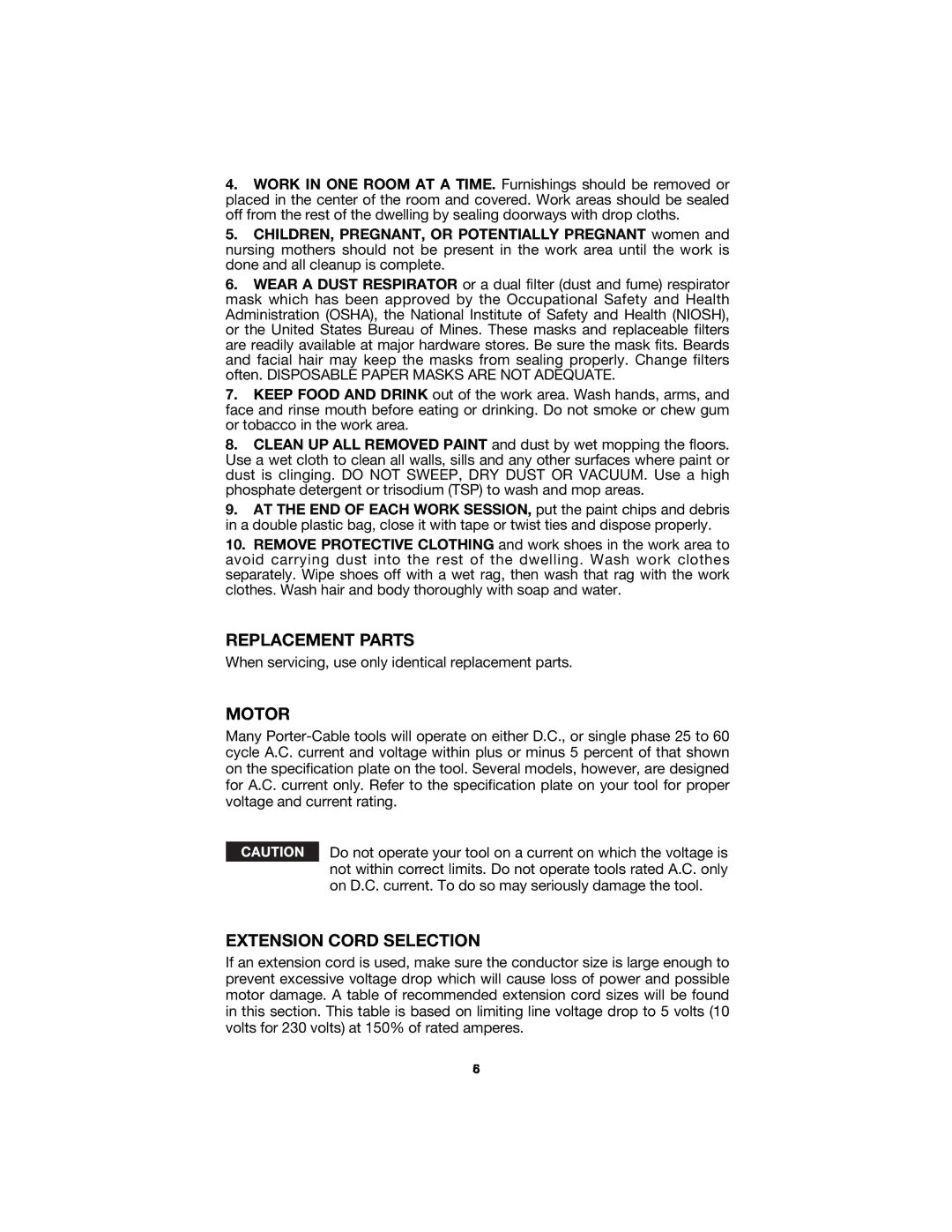4.WORK IN ONE ROOM AT A TIME. Furnishings should be removed or placed in the center of the room and covered. Work areas should be sealed off from the rest of the dwelling by sealing doorways with drop cloths.
5.CHILDREN, PREGNANT, OR POTENTIALLY PREGNANT women and nursing mothers should not be present in the work area until the work is done and all cleanup is complete.
6.WEAR A DUST RESPIRATOR or a dual filter (dust and fume) respirator mask which has been approved by the Occupational Safety and Health Administration (OSHA), the National Institute of Safety and Health (NIOSH), or the United States Bureau of Mines. These masks and replaceable filters are readily available at major hardware stores. Be sure the mask fits. Beards and facial hair may keep the masks from sealing properly. Change filters often. DISPOSABLE PAPER MASKS ARE NOT ADEQUATE.
7.KEEP FOOD AND DRINK out of the work area. Wash hands, arms, and face and rinse mouth before eating or drinking. Do not smoke or chew gum or tobacco in the work area.
8.CLEAN UP ALL REMOVED PAINT and dust by wet mopping the floors. Use a wet cloth to clean all walls, sills and any other surfaces where paint or dust is clinging. DO NOT SWEEP, DRY DUST OR VACUUM. Use a high phosphate detergent or trisodium (TSP) to wash and mop areas.
9.AT THE END OF EACH WORK SESSION, put the paint chips and debris in a double plastic bag, close it with tape or twist ties and dispose properly.
10.REMOVE PROTECTIVE CLOTHING and work shoes in the work area to avoid carrying dust into the rest of the dwelling. Wash work clothes separately. Wipe shoes off with a wet rag, then wash that rag with the work clothes. Wash hair and body thoroughly with soap and water.
REPLACEMENT PARTS
When servicing, use only identical replacement parts.
MOTOR
Many
Do not operate your tool on a current on which the voltage is not within correct limits. Do not operate tools rated A.C. only on D.C. current. To do so may seriously damage the tool.
EXTENSION CORD SELECTION
If an extension cord is used, make sure the conductor size is large enough to prevent excessive voltage drop which will cause loss of power and possible motor damage. A table of recommended extension cord sizes will be found in this section. This table is based on limiting line voltage drop to 5 volts (10 volts for 230 volts) at 150% of rated amperes.
56
